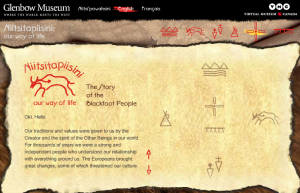I am making this post in the order that I found these resources as I feel it illustrates my research path. I’m getting warmer.
Cherubini, L. (2014). Aboriginal Student Engagement and Achievement: Educational Practices and Cultural Sustainability. Vancouver: UBC Press.
This online book uses stories from the Aboriginal Student Program at an Ontario high school to illustrate the implementation of best practices and programming for aboriginal student engagement and achievement. The book describes the program derived in part from Ontario’s Ministry of Education and outlines the outcomes of the program with intent of others learning from their success. Access to the book requires UBC library login.
Henderson, R., Williams, K. & Crowshoe, L. (2015). Mini-med school for Aboriginal youth: experiential science outreach to tackle systemic barriers. Medical Education Online, 20.
I originally thought that this article might contribute to my final project. Upon reading it, I don’t think it applies to my goals, but is a fascinating summary of a program with admirable goals. The University of Calgary’s Cumming School of Medicine runs a mini-med school for indigenous junior and senior high students. The program supports the overarching goal of improving health care services for aboriginal people as well as addressing the under representation of aboriginal people in medical professions. I look forward to reading future reports on the success of this program. Available online at UBC library.
Martin Aboriginal Education Initiative. (n.d.). Promising Practices in Aboriginal Education. Retrieved from http://www.maei-ppw.ca/professional_development.html
This website composed by the non-profit group Martin Aboriginal Education Initiative is invaluable for practitioners. The site has reference documents on 80 issues relating to Aboriginal Education. The documents range from tip sheets to full reviews of implemented programs. I know that I will be accessing this site again.
Alberta Education. (2015). Guiding Voices: A curriculum development tool for inclusion of First Nation, Metis and Inuit perspectives throughout curriculum. Retrieved from http://www.learnalberta.ca/content/fnmigv/index.html
This resource will be a primary resource for my final assignment. It is a guide for curriculum developers in Alberta and a required toolkit for use by curriculum developers in Alberta. Curriculum developers are responsible for the Alberta Programs of Studies, which then guide course development. Ideally, the same principles and guidelines should follow from these guidelines.
Robb, M. (2005). Our words, our ways: teaching First Nation, Metis and Inuit learners. Retrieved from teachinghttps://education.alberta.ca/media/563982/our-words-our-ways.pdf
I have finally hit the jackpot on locally developed resources on Aboriginal Education. This document outlines the cultural background of Aboriginal groups in Alberta and touches on strategies for education. This resource was developed by teachers and elders in Alberta for teachers in Alberta. I can’t wait to dive in.
